Excerpts from Jim Conrad's
Naturalist Newsletter
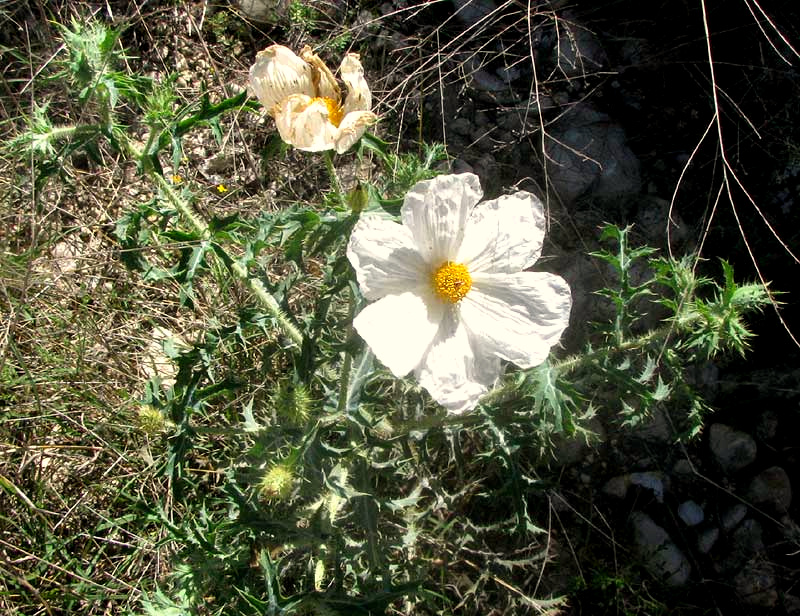
from the the May 19, 2013 Newsletter issued from the Frio Canyon Nature Education Center in northern Uvalde County, southwestern Texas, on the southern border of the Edwards Plateau; elevation ~1750m (~5750 ft); N29.62°, W99.86°; USA
TEXAS PRICKLY POPPIES
Each morning I jog down the valley as the sun rises, and that's a kind of meditation I enjoy, my body on autopilot, deer out in the fields watching like statues, the light changing moment by moment, cloud colors like slow-motion kaleidoscopes. A pasture along the road was broken up a few weeks ago in preparation for sowing grass for cows to eat. So far no grass has been sown, maybe because of the lack of spring rain, but the field has produced a bounteous crop of wildflowers with exceedingly large, white blossoms that in the pre-dawn light glow as if a kind of mysterious radiance were within them. Below, you can see what I mean in a picture taken in predawn light:
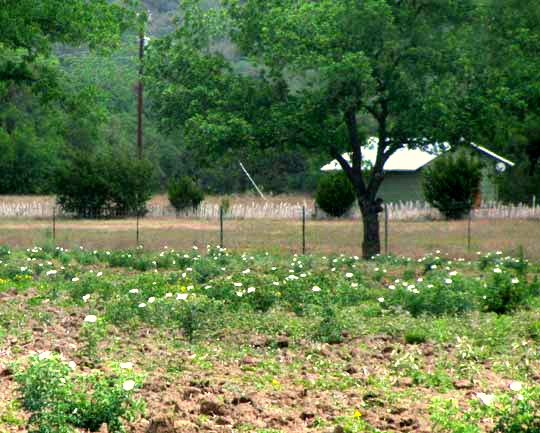
Up close you see that with such bodacious blossoms and profoundly spiny herbage they can't be anything other than prickly poppies. One with a flower about four inches across (10cm) is shown at the top of this page.
In that picture the yellow "eye" is composed of about 120 stamens, which are the blossom's pollen-producing male parts. In the center of the bouquet of stamens there's a tiny orange object deserving close inspection, which can be done below:
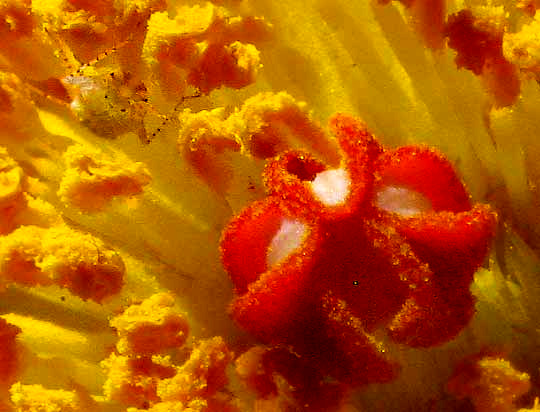
The yellow things are the stamens, with granular pollen adhering to the open anthers atop their slender filaments. The orange-and-white thing is the stigma, which is the pollen-receiving part of the female pistil, the place where pollen grains germinate. I've never seen such a two-colored, ornately structured stigma as this. What a thing it would be to be that yellow critter so beautifully camouflaged at the picture's upper left corner, working your way through the forest of stamens and coming upon this otherworldly stigma head nestled in the forest center.
Once the blossoms are pollinated, the petals fall off and the ovary, which is also very spiny, rapidly expands, forming the item shown below:
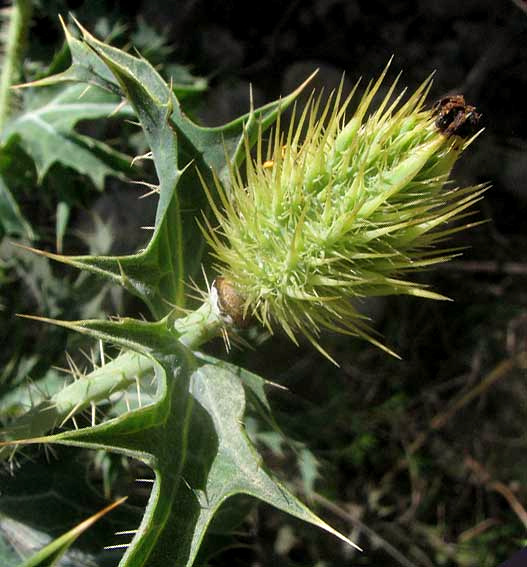
That'll become a capsular fruit, but right now it's just a maturing ovary not worrying too much about critters biting into it.
Prickly poppies are members of the Poppy Family, the Papaveraceae, but they're not "real poppies." Real poppies are members of the genus Papaver; Prickly poppies belong to the genus Argemone. Presently 32 Argemone species are recognized, of which 15 occur in North America, mostly in the southern and western states. So, which of the 15 do we have here?
Because I've seen prickly poppies with large, white flowers in much of arid Mexico and the western US, and because ours grow so profusely in plowed fields and along roads, I figured my jogging-road ones would turn out to be rank weeds found over a broad area. Happily, however, the taxonomic treatment of prickly poppies is finished in the Flora of North America, so I could identify our plants with certainty, and they turned out to be something special.
They're narrowly endemic Texas Prickly Poppies, ARGEMONE AURANTIACA, in the whole world occurring naturally only in a few counties in central and southwestern Texas. The Flora of North America describes their habitats as "Fields, pastures, hills; 150-500 m (transition zone between lowlands and plateau)." That's us exactly, and what an exciting discovery.
One important field mark separating the Texas Prickly Poppy from other Argemone species in the region is the fact that the stem is copiously prickly with close-together spines, plus at least the bottom of the plant's leaves bear substantial, sometimes branched spines on their veins, and between the veins there are smaller stiff hairs or spines, as shown below:
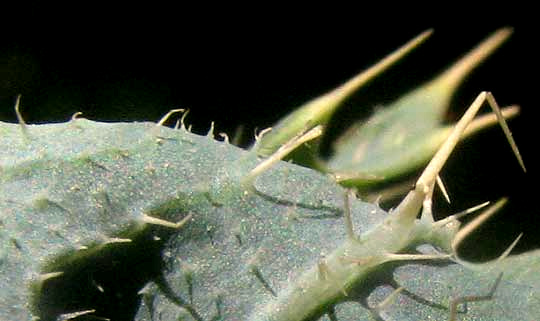
Of course "real poppies" are medicinal -- morphine being derived from opium, which is made from the milky latex of the Opium Poppy, Papaver somniferum. Texas Prickly Poppies also produce a milky latex, orange in color, as you can see exuding from veins of a broken leaf below:
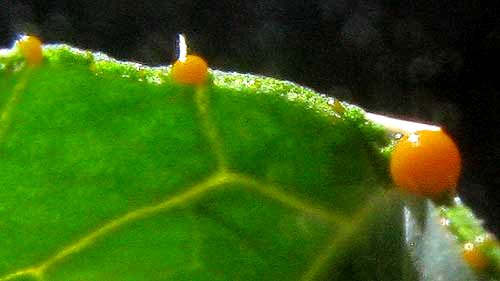
Native American cultures historically used prickly poppy latex for a wide variety of medicinal purposes. For example, the Seri people of Sonora, Mexico made an infusion, or tea, from the entire plant of a species found in their area (Argemone mexicana) both to relieve kidney pain, to help expel a torn placenta, and in general to help cleanse the mother's body after giving birth. The Texas Prickly Poppy wasn't recognized science until 1958 -- until then it was considered a variation of other species -- so little ethnobotanical information has been attributed to it. It can be assumed, however, that indigenous people in our area, not worried about the plant's taxonomy, had a very high regard for the magical properties -- whether real or imagined -- of the plant's startlingly orange latex.